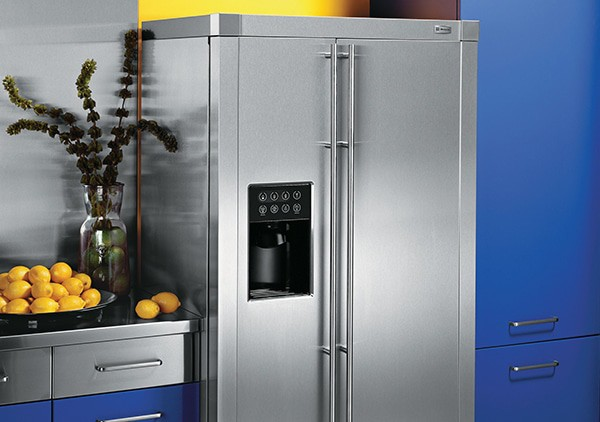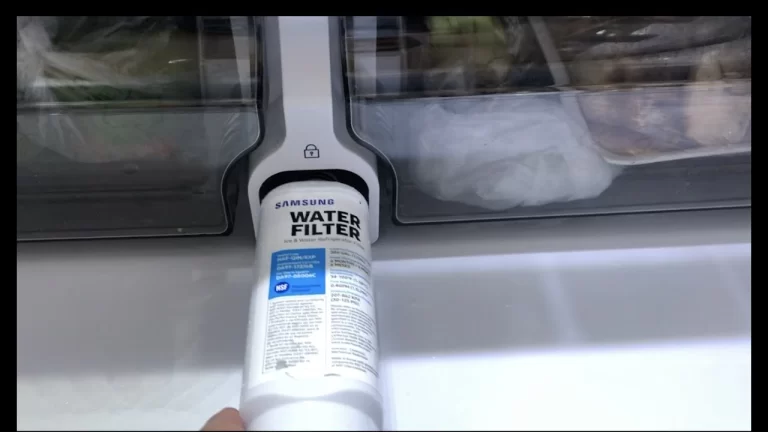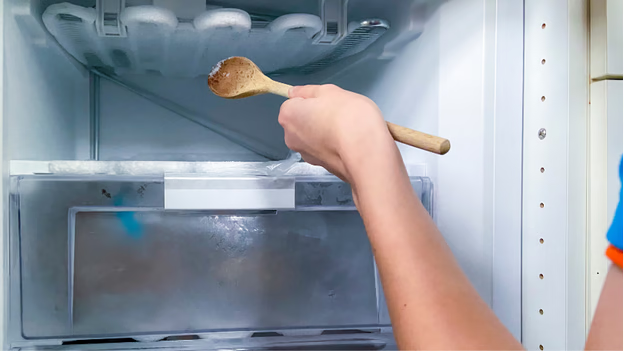Refrigerators are an essential appliance in our daily lives, helping to preserve our food and keep it fresh. However, even the most reliable refrigerators can encounter issues over time. One common problem faced by Samsung refrigerator owners is defrosting problems. Excessive frost buildup can hinder the refrigerator’s cooling efficiency and lead to temperature fluctuations, potentially affecting the quality and safety of stored food. In this article, we will explore the causes of defrosting issues in Samsung refrigerators, provide step-by-step troubleshooting solutions, offer preventive maintenance tips, and guide you on seeking professional assistance when necessary.
A Samsung refrigerator defrost problem refers to issues with the defrosting system that cause frost buildup and temperature fluctuations. Troubleshooting involves identifying the problem, basic maintenance, and addressing component failures. Seeking professional assistance may be necessary.
Quick Troubleshooting Guide
| Defrost Issue | Fix |
| Warm Air Leaking through the Door | Force-defrost the refrigerator and ensure the door is closed tightly each time you open it |
| Improper Aeration | Space food evenly, away from freezer walls, and force-defrost the fridge |
| Open Ice Flap | Remove obstructions preventing the ice maker flap from closing correctly, and then force-defrost the refrigerator |
| Drain Tube Moisture Leak or Blockage | Have a professional inspect the drain tube for moisture leakage or blockage and address it |
| Component Failure | Inspect and replace faulty components such as the defrost timer, heater assembly, thermostat, control board, etc. |
| Refrigerant Leak | Contact a professional technician to diagnose and fix the refrigerant leak |
Understanding Defrost Problems in Samsung Refrigerators

To effectively troubleshoot defrosting problems, it is crucial to understand how frost buildup occurs in refrigerators. When warm air enters the refrigerator, it condenses and freezes on the evaporator coils.
The defrost system, consisting of a defrost timer or control board, defrost heater, and defrost thermostat or sensor, works to melt this frost during regular defrost cycles. However, when any component within this system malfunctions, frost can accumulate and cause issues.
Signs of a defrost problem in a Samsung refrigerator may include visible frost buildup on the evaporator coils, fluctuating temperatures inside the fridge, and unusual noises such as a clicking sound indicating a faulty defrost timer.
Troubleshooting Steps for Samsung Refrigerator Defrost Problems

Step 1: Identifying the Problem
Begin by checking for visible signs of frost buildup on the evaporator coils. Excessive frost indicates a defrost problem. Additionally, observe if the refrigerator is experiencing temperature fluctuations or if there is ice accumulation in the freezer compartment. Unusual noises, such as a clicking sound, may also suggest a malfunctioning defrost timer.
Step 2: Basic Troubleshooting Techniques
Start with basic maintenance tasks to optimize the refrigerator’s performance. Clean the refrigerator coils and vents to ensure efficient airflow and prevent frost accumulation. Adjust the temperature settings to the manufacturer’s recommended levels, as incorrect settings can contribute to frost buildup. Additionally, ensure proper airflow inside the refrigerator by organizing food items to allow air to circulate freely.
Step 3: Addressing Common Causes of Defrosting Issues
- Testing the Defrost Timer or Control Board:
The defrost timer or control board regulates the defrost cycle. If it is faulty, it may not initiate the defrosting process. Follow the manufacturer’s instructions to test and replace the defrost timer or control board if necessary.
- Inspecting and Replacing the Defrost Heater:
The defrost heater is responsible for melting the frost on the evaporator coils. If it is defective, frost accumulation will persist. Inspect the defrost heater for any signs of damage or malfunction and replace it if needed.
- Checking the Defrost Thermostat or Sensor:
The defrost thermostat or sensor monitors the temperature of the evaporator coils. If it fails, the defrost cycle may not activate, leading to excessive frost buildup. Test the defrost thermostat or sensor using a multimeter and replace it if it’s faulty.
Step 4: Additional Troubleshooting Options
- Defrosting the Refrigerator Manually:
If you are experiencing severe frost buildup, manually defrosting the refrigerator can help resolve the issue temporarily. Unplug the refrigerator, empty the contents, and allow the frost to melt naturally. Clean the interior and restart the refrigerator once all the ice has melted.
- Verifying the Integrity of the Door Seals:
Damaged or worn-out door seals can lead to cold air leaks, causing excessive frost formation. Inspect the door seals for any gaps or tears, and replace them if necessary to ensure a proper seal.
- Inspecting the Evaporator Fan:
The evaporator fan circulates cold air throughout the refrigerator. If it malfunctions, cold air may not reach all areas, resulting in frost buildup. Check the fan’s operation, and if it’s not running or making unusual noises, it may require repair or replacement.
Preventive Measures and Maintenance Tips
To minimize the occurrence of defrost problems in your Samsung refrigerator, follow these preventive measures and maintenance tips:
- Regularly clean the refrigerator coils and vents to ensure proper airflow.
- Avoid overloading the refrigerator and blocking airflow with food items.
- Keep the refrigerator temperature at the recommended levels.
- Check and clean the door seals regularly to maintain a tight seal.
- Store food properly to prevent moisture buildup inside the refrigerator.
- Seeking Professional Assistance
If you encounter complex defrosting problems or are unsure about performing repairs yourself, it is advisable to seek professional assistance. Contact Samsung customer support or a qualified appliance repair technician who specializes in Samsung refrigerators. They have the expertise to diagnose and resolve more intricate issues effectively.
Check Out: Samsung refrigerator water dispenser not working
FAQs
How often should I manually defrost my Samsung refrigerator?
Ideally, Samsung refrigerators are designed to automatically defrost several times a day. However, if you notice excessive frost buildup, you can manually defrost the refrigerator every 6 to 12 months or as needed. This can help maintain optimal performance and prevent future defrost problems.
Can a faulty door seal contribute to defrost problems?
Yes, a damaged or worn-out door seal can lead to cold air leaks, resulting in excessive frost buildup in the refrigerator. Inspect the door seals regularly and replace them if you notice gaps or tears. A tight seal will help maintain proper temperature and reduce the likelihood of defrost issues.
Are there any specific cleaning products I should use to clean the refrigerator coils and vents?
It is recommended to use a soft brush or vacuum cleaner with a brush attachment to gently remove dust and debris from the refrigerator coils and vents. Avoid using harsh chemicals or abrasive materials that may damage the coils. Refer to the manufacturer’s guidelines for specific cleaning recommendations.
How can I ensure proper food storage to prevent frost buildup?
Proper food storage is essential for maintaining good airflow inside the refrigerator. Avoid overpacking the refrigerator and ensure there is space between food items to allow for proper circulation of cold air. Additionally, cover food items to prevent moisture from evaporating and contributing to frost accumulation.
What are the benefits of regular maintenance for my Samsung refrigerator?
Regular maintenance of your Samsung refrigerator can help prevent defrost problems and prolong its lifespan. Routine cleaning of coils and vents promotes optimal airflow, while checking and replacing faulty components can prevent issues before they escalate. Proper maintenance ensures efficient cooling, reduces energy consumption, and helps avoid costly repairs in the long run.
Conclusion
Addressing defrost problems promptly is crucial to ensure the optimal performance of your Samsung refrigerator. By following the troubleshooting steps outlined in this article, you can identify and resolve defrosting issues. Regular maintenance and preventive measures are key to preventing future problems. Remember, if you’re unsure or encounter complex issues, seek professional assistance to avoid any further complications. With these solutions and proactive maintenance, you can enjoy a reliable and efficiently functioning Samsung refrigerator for years to come.






